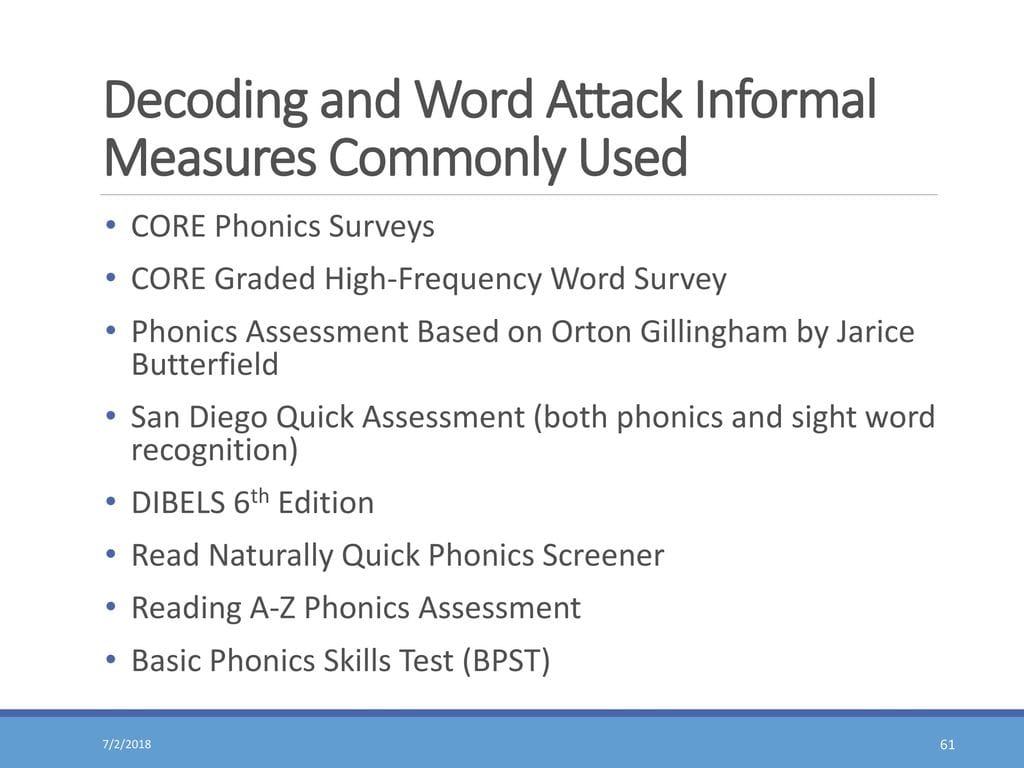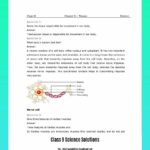Want to empower your students to become confident readers? Phonics instruction plays a crucial role, and understanding each student’s current skill level is the first step. Quick phonics screeners offer a streamlined approach to identifying strengths and weaknesses in this foundational area. This guide provides a comprehensive overview of quick phonics screeners, from their purpose and administration to interpreting results and using the data to inform instruction. We’ll also explore some readily available resources, including free options, to help you get started. Let’s unlock your students’ reading potential together!
Understanding Quick Phonics Screeners
Quick phonics screeners provide a snapshot of how well your students are grasping key phonics concepts. These targeted assessments focus on decoding (reading words) and encoding (spelling words), giving you a roadmap for personalized reading instruction. While numerous screeners exist, selecting the right one requires careful consideration.
Choosing the Right Screener
Selecting a quick phonics screener is like choosing the right tool for a job. Several factors influence this decision:
- Student Age and Grade: A screener designed for kindergarten likely won’t challenge a second grader. Developmentally appropriate assessments are essential.
- Targeted Skills: Some screeners focus on fundamental skills (single letter sounds) while others assess more complex skills (blends like “bl,” “st,” or digraphs like “sh,” “ch”). Choose a screener aligned with your current instructional focus.
- Time Constraints: Realistically assess how much time you can dedicate to assessment. Some screeners take just minutes per student, while others are more time-intensive.
- Format: Consider whether paper-and-pencil, digital, or a mixed format best suits your classroom needs and student preferences.
Administering and Interpreting
Giving the Screener
Administering a quick phonics screener is typically straightforward. Students usually read words or sentences aloud, while you observe their decoding skills. Some screeners also include a spelling component. Clear instructions and a positive, supportive environment are crucial. A calm atmosphere can significantly impact student performance.
Understanding the Results
Interpreting the results involves careful analysis. Most screeners include scoring guides or rubrics to help translate student performance into actionable information. Look for patterns: Are certain sounds or letter combinations consistently challenging for multiple students? These patterns can inform your instruction.
Putting Data into Action
Using Data to Inform Instruction
Quick phonics screeners aren’t just about identifying weaknesses; they’re about fostering growth. Use the data to personalize lessons. If many students struggle with blends, dedicate extra time to practicing them. Small group instruction, one-on-one support, and targeted activities can be highly effective.
Examples of Quick Phonics Screeners
Need some starting points? Here are a few options:
| Screener Type | Description | Pros | Cons |
|---|---|---|---|
| Commercial | Published programs like Read Naturally often include proprietary screeners with resources like multiple versions and scoring guides. | Typically well-researched and offer comprehensive data; may include helpful supplemental materials. | Can be expensive. |
| Free Printable | Many free printable screeners are available online (e.g., from educational websites or blogs like Mrs. Learning Bee). | Easily accessible and budget-friendly. | Quality varies; may require teacher preparation/adaptation. |
| District/School | Some districts/schools develop their own screeners. | Aligned with specific curriculum and student population. | May not be accessible to educators outside of that district/school. |
| Informal/Teacher-Made | Create assessments tailored to your students’ unique needs. | Highly flexible and adaptable to the specific classroom context. | Requires teacher time and effort to develop; may lack standardization. |
Advanced Strategies and Considerations
Leveling Up Your Screening
- Differentiation: Every learner is unique. Use the data to create individualized support and interventions, moving beyond a one-size-fits-all approach.
- Technology Integration: Explore digital tools (Teachy AI is one example) for streamlined data collection and progress monitoring. Many programs offer engaging activities to enhance student motivation.
- Curriculum Alignment: Ensure your chosen screener aligns with your phonics curriculum for a cohesive learning experience.
A Deeper Dive into Phonics Screeners
What is the Best Quick Phonics Screener?
There’s no single “best” screener. The ideal choice depends on your specific needs, much like choosing the right wrench for a specific bolt. Consider factors like grade level, available time, budget, and the precise skills you aim to assess.
Phonics Screeners: Formal vs. Informal
Phonics screeners range from formal, standardized tests (often used district-wide) to informal checklists or teacher-created assessments. Formal assessments track overall progress, while informal assessments offer a closer look at individual student growth. Some curricula even embed informal screeners within their lessons.
Essential Qualities
Regardless of the type, a good phonics screener is user-friendly, with clear instructions and simple scoring. It aligns with your curriculum and provides actionable data to adjust your teaching. A reliable screener enhances your teaching effectiveness, not adds to your workload.
Popular Choices: A Closer Look
Several respected screeners are available. The Read Naturally Quick Phonics Screener has been a trusted resource for over a decade, providing comprehensive diagnostic information. The CORE Phonics Surveys are another popular option, adaptable for K-12 students and various instructional approaches (including Balanced Literacy). Budget-conscious educators appreciate free resources like those from Mrs. Learning Bee, including a nine-page phonics profile, phonological and phonemic awareness profiles, and spelling inventories.
Comparing Popular Screeners
| Screener | Cost | Time Required | Target Grade Levels | Data Provided |
|---|---|---|---|---|
| Read Naturally Quick Phonics Screener | Varies | Short | Varies | Diagnostic information on phonics/decoding skills |
| CORE Phonics Surveys | Varies | Short | K-12 | Broad phonics skills assessment |
| Mrs. Learning Bee Resources | Free | Short | K-2 | Detailed individual student phonics profile; other supplemental resources available |
Putting the Data to Work
Administering the screener should be seamless and minimally disruptive. Interpreting the results involves unlocking valuable insights into reading development. This data should inform instruction, supporting personalized learning experiences.
Phonics in Context
Phonics is one piece of the reading puzzle. Fluency, vocabulary, and comprehension build upon this foundation. Integrating phonics screening into a broader literacy framework ensures comprehensive reading development. The goal is to nurture a love of reading, not just decoding skills.
The Purpose of a Quick Phonics Screener
A quick phonics screener (QPS) spotlights fundamental reading skills. It gauges phonemic awareness (understanding sounds in words), phonics knowledge (how letters and sounds work together), and decoding ability (sounding out words). This acts as a quick checkup, not a high-stakes test.
Why is it Important?
Phonics is the foundation of reading. A QPS checks this foundation early, identifying weaknesses before they become larger problems. Early intervention is more effective than addressing ingrained bad habits later on.
Choosing the Right Screener
Consider your students’ ages and the specific skills you’re teaching. Some screeners are broad, others focus on specific areas. Choose an efficient yet thorough option. Free resources like those from Mrs. Learning Bee are excellent for K-2, while the CORE Phonics Surveys cover K-12.
Administering and Interpreting
Administering a screener should be a relaxed, supportive experience. Observe how students handle sounds and letter combinations. Interpreting isn’t about labeling, but understanding individual needs and customizing instruction accordingly.
Using the Data
Use screener results to create targeted lesson plans, small groups, and individualized support. Treat the results as a personalized learning recipe. Regularly reviewing data and adjusting instruction is often recommended by experts, although research on specific intervention strategies continues.
The Bigger Picture
QPS is a powerful tool for prevention. Early identification of potential reading difficulties allows for timely intervention. Sharing results with parents facilitates collaboration and support. Research suggests parent involvement based on screener data can be impactful, but studies are ongoing.
Scoring a Quick Phonics Screener (and Spelling)
Scoring the Quick Phonics Screener (QPS) and the complementing Quick Spelling Screener (QSS) involves examining student responses to understand their phonics skills. It’s a snapshot, not a judgment.
Scoring Each Task
Individual Scoring: Each QPS task assesses a different skill. Score by calculating the ratio of correct to total responses (e.g., 13/21).
Underlined Words (QPS 2b-6b): Focus on the underlined word for the formal score. However, observe responses to all words for valuable additional insights. Annotating these observations can be very helpful.
Interpretation: Look for patterns in strengths and weaknesses. The QPS is a diagnostic tool to inform instruction, not a student evaluation.
Using the QPS and QSS in Your Classroom
The QPS pinpoints areas for support. For example, struggles with blends suggest focusing on those sounds. The QSS, found in the third edition, complements the QPS by assessing encoding (spelling). Together they provide a 360-degree view of literacy development.
Monitoring Progress
The QPS can be administered multiple times to track progress and assess instruction effectiveness. It helps ensure continuous student growth.
Practical Tips
- Create a Rubric: Develop a rubric for observing the unscored words in the QPS to gather richer data.
- Combine Data: Analyze QPS and QSS results together for a comprehensive profile.
- Track Progress: Monitor performance over time to understand long-term instructional impact.
The goal is to understand how students learn best and provide truly individualized support. The QPS is one tool among many, but a powerful one. It can significantly impact literacy development, while ongoing research continues to improve our understanding of its effectiveness. You may also find our science balancing equations worksheet a helpful resource for incorporating cross-curricular connections.
- Sons of Darkness Review: Epic Fantasy Reimagining of Vedic India - April 17, 2025
- Find Top Hero Books: Epic Journeys Now - April 17, 2025
- Types of Drainage Systems: Choosing the Right Solution for Your Property - April 17, 2025

















2 thoughts on “The Best Quick Phonics Screeners: Free Tools & Targeted Strategies for Teachers”
Comments are closed.